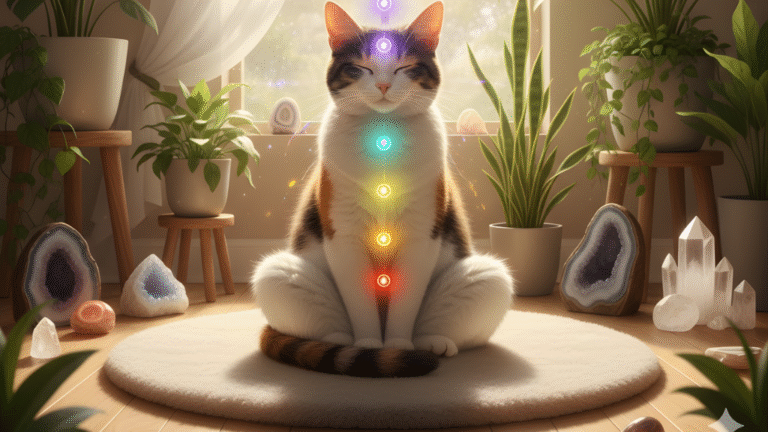How Reiki Differs From Traditional Veterinary Care
Reiki brings a unique and sometimes surprising option to the table when thinking about animal health.
While most people picture veterinary visits filled with physical exams, medications, and procedures, Reiki stands apart as something entirely different.
Let's break down what makes Reiki stand out from the usual veterinary care most of us know, and why some people include it in their pet’s lives.
Did you know that many pet parents combine their love for animals and Reiki into thriving blogs and businesses? 🐾 Discover how inside Wealthy Affiliate.
Understanding Reiki And Traditional Veterinary Care
Animals need a range of care options, from medical treatments to emotional support. Both Reiki and veterinary medicine have their places, but their methods and overall goals can be very different.
Reiki, which originated in Japan, translates to “universal life energy.” The practice focuses on nurturing relaxation and natural healing by channelling energy through gentle touch or sometimes just by sitting quietly near the animal.
There’s no medication, surgery, or needles involved—just calm, quiet, and intention. Regular veterinary care involves diagnosing and treating illnesses using science-based medicine.
Vets rely heavily on physical exams, lab tests, imaging, surgery, vaccines, and medication for both prevention and treatment. The approach is very hands-on, clinical, and aims to see direct, measurable results every time.
Both Reiki and traditional care can help animals, but the way they do it—and what they promise—are miles apart. Understanding this helps pet owners make the right choices for their companions.
How Reiki Is Practiced With Animals
Animal Reiki sessions look pretty different from a typical vet visit. A Reiki practitioner typically spends quiet time with the animal, sometimes laying hands gently on the animal or holding their hands just a little distance away.
The animal sets the pace, choosing if they're comfortable with touch or prefer to stick nearby without being held. This makes the experience soothing and pressure-free, allowing pets to relax and let go of stress.
1. Non-Invasive
Reiki doesn’t use needles, pills, or even restraint. Many animals find this helpful, especially if they’re anxious or nervous around vets.
2. Holistic Focus
The idea isn’t to target a specific physical problem, but to nurture overall relaxation and balance.
3. Intuitive Response
Practitioners adapt their sessions based on the animal’s mood and comfort, making each experience highly personal. Animals often express when they’ve had enough or want more by moving closer or drifting away.
Most pet owners notice their pets seem calmer and at ease either during or after Reiki, even if it's hard to see immediate physical changes. The benefits are often subtle but impactful for the animal’s mental and emotional state.
What Happens At A Typical Vet Appointment?
A traditional veterinary appointment usually follows a set routine:
1. Physical Exams
The vet checks temperature, pulse, eyes, ears, and teeth to catch any signs of illness.
2. Diagnostics
Blood tests, x-rays, and ultrasounds help figure out what’s happening inside the animal’s body.
3. Treatment
Medication, surgery, wound care, or other hands-on interventions are handled here.
4. Prevention
Vaccines and regular checkups protect animals from problems before they start.
This approach sticks to evidence, clear protocols, and measurable outcomes, following scientific research and the latest best practices.
It’s reliable and effective, though it can be stressful or scary for some pets because of all the medical equipment and the unfamiliar environment.
Goals: Healing Or Managing Disease?
The main contrast between Reiki and veterinary care comes down to their goals for your animal’s well-being.
Veterinary Medicine
Focuses squarely on diagnosing, treating, or preventing diseases. Vets address symptoms, illnesses, injuries, and work hard to restore the animal’s body to health.
Reiki
Nurtures the animal’s natural energy and encourages a state where healing might happen on its own. Reiki practitioners don’t give diagnoses or claim to fix medical problems.
Instead, the aim is to soothe emotional stress, calm nerves, and help animals feel balanced overall. Many pet owners use Reiki as a sidekick to vet treatments.
For instance, a dog recovering from surgery might get both traditional wound care, medicine for pain, and also benefit from Reiki to settle nerves and support better rest.
Key Differences Between Reiki and Traditional Vet Care
The differences between Reiki and veterinary medicine stand out clearly:
1. Basis
Reiki deals with energy and intention. Vet care relies on scientific testing, observation, and proven treatments.
2. Methods
Reiki is hands-off or very gentle, with a focus on creating calm and being present. Veterinary care uses medical skills, technology, and direct intervention.
3. Outcomes
Reiki is about fostering relaxation, easing anxiety, and increasing animal comfort. Vet medicine tackles specific diseases and physical symptoms head-on.
4. Regulation
Veterinarians need degrees, licenses, and must stay up-to-date with continuing education. Reiki practitioners may be certified, but the practice isn’t regulated in the same way. That means it’s up to pet owners to do their homework before picking a practitioner.
Challenges And Concerns When Choosing Reiki
Reiki can make a great partner to veterinary care, but there are things all pet owners need to keep in mind:
1. Not a Replacement for Medical Treatment
Reiki isn’t a substitute for professional veterinary care. If a pet is sick, injured, or showing signs something’s wrong, a vet’s help comes first.
2. Lack of Scientific Evidence
There’s a growing number of positive stories, but scientific studies proving Reiki’s effectiveness in animals are still pretty limited.
3. Practitioner Qualifications
Since Reiki isn’t regulated, searching for practitioners with solid training, real experience, and good references is key.
4. Animal Consent
Not every pet will like or want Reiki, and watching your animal’s cues is crucial. Their comfort comes first at all times.
5. Not A Medical Cure
It’s common to see Reiki misunderstood as a “cure” for animal health issues, but responsible practitioners use it as a support therapy.
When your animal needs real medical help, always go to the vet first. After care is underway, chat with your vet about including Reiki as part of the comfort plan if you’re curious.
Choosing A Reiki Practitioner For Your Animal
If you’re thinking about adding Reiki to your animal’s routine, try these steps:
- Ask friends, trainers, or your veterinarian if they know any reliable animal Reiki practitioners near you.
- Find practitioners who have learned from reputable organizations and who have dealt with a variety of animals before.
- Don’t hesitate to ask about their training and how they handle sessions, especially if your animal has suffered trauma or has medical history.
- Some practitioners offer a trial session to see if your animal responds well before signing up for more.
How Reiki And Traditional Care Work Together
Reiki and veterinary medicine don’t have to be at odds—they can be teamed up for the benefit of your pet. Here’s where Reiki really fits in:
1. Managing Stress
Reiki can help pets stay calm during vet visits, grooming, or times of recovery.
2. Supporting Recovery
Animals healing from surgery or illness may relax more, sleep better, or seem less anxious after Reiki sessions.
3. End-of-Life Comfort
Reiki can help hospice or elderly pets find stillness and comfort in their last days.
4. Behaviour and Bonding
Some owners feel that Reiki deepens their connection with their animals, helping routines and interactions at home feel more peaceful.
Check in with your vet about including Reiki alongside regular veterinary care. Many vets are open to supportive therapies, especially if they’re used alongside—not instead of—needed medical treatment.
Common Questions About Reiki and Veterinary Care
People interested in Reiki for their pets often want to know what to expect in real life:
Question: Can Reiki treat serious illnesses?
Answer: Reiki isn’t a treatment for specific diseases and doesn’t replace real veterinary care. While it might help pets feel calmer or more at ease, real medical problems need a vet’s attention.
Question: Is Reiki safe for all animals?
Answer: Reiki is generally gentle and safe for most pets of any age. Practitioners read animals’ comfort and never force a session if the animal seems uneasy or unsettled.
Question: Should I tell my vet if I’m using Reiki?
Answer: Most veterinarians appreciate hearing about any other therapies you use. Sharing this information helps your care team pull together for your pet’s best interests.
Question: How long does a Reiki session last?
Answer: Sessions vary by animal type, size, and attention span. Typical sessions last between 15 and 60 minutes. Some pets benefit from quick, gentle visits, while others may soak in the experience for longer.
Real-World Experiences: Stories From Pet Parents
Many pet owners have witnessed Reiki’s soothing touch, especially for anxious pets during storms or stressful vet trips.
One cat owner included Reiki post-surgery: her cat curled up and became noticeably peaceful following each session.
Another reported her senior dog slept better and reduced nighttime restlessness after routine Reiki.
Individual animals respond differently, but many people notice a change in their pet’s emotional well-being after these gentle sessions.
Reiki has also been explored in animal shelters and rescues. Some volunteers use it to help shy or traumatized animals feel more secure, and there are stories of fearful pets warming up to new environments after a few calming Reiki visits.
Veterinary professionals increasingly field questions about safe, noninvasive ways to support animal well-being, and Reiki comes up more often in those conversations.
Wrapping Up: Choosing What’s Right for Your Pet
Deciding between Reiki and traditional veterinary care rarely means picking just one. Veterinary medicine takes care of injury, illness, and prevention, while Reiki can bring calm, peace, and energetic support.
Both play a role in a happy, healthy pet, especially when used together with care and thought. Doing research, respecting your pet’s signals, and working closely with both your vet and a skilled Reiki practitioner lets you build a supportive plan tailored for your animal’s needs.
I trust you enjoyed this article on How Reiki Differs From Traditional Veterinary Care. Please stay tuned for more Reiki insights, pet wellness tips, and holistic lifestyle ideas.
Take care!
— JeannetteZ
💬 Your Opinion Is Important To Me
Do you have thoughts, ideas, or questions? I’d love to hear from you. Please leave your comments below or email me directly at Jeannette@pawreiki.com.
🐾 More PawReiki Reads
💜 My #1 Recommendation for Online Success
Reiki has been life-changing for me, and I love sharing it online. If you’ve wondered how Reiki lovers turn their passion into income, this platform is the best place to start.
🌟 See How Reiki Lovers Build Online Income — Try WA FreeDisclosure
This post may contain affiliate links. I earn from qualifying purchases at no extra cost to you. Please read my full disclosure.







